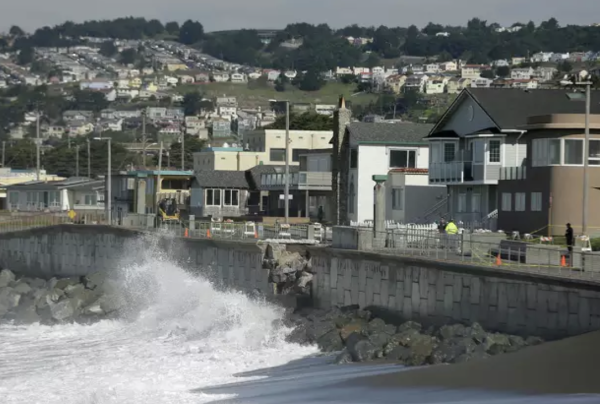For decades, discussions of removing historical statues have been debated on the national level. As we are becoming progressively cognizant of the historical injustices inflicted in the past, Americans, as a collective, are working to tear down the outdated, harmful symbols that are idolized and monumented on shiny pedestals, both figuratively and literally. But today, we find a new chapter of this debate within our sunny neighboring town of Pacifica, California.

The removal of Portolá from Pacifica was long-disputed, with initial objections dating as far back as 2020. Danielle Redlin Gustavson’s petition titled “Be on the Right Side of Pacifica’s History: Remove the Statue of Colonizer Portola” has gathered roughly 5,000 signatures since its launch on June 25th, 2020.
In her petition, Gustsavson thoroughly exposes Portolá’s offenses, origin, and actions: “[Portolá] did not ‘discover’ Pacific, nor did he ‘discover’ the San Francisco Bay…Portola’s expedition marked the beginning of the end for Native people in California.”
Additionally, Pacifica leaders such as City Manager Kevin Woodhouse have suggested better-fit locations for the statue, such as museums, since the argument is that the top priority of the statue is to educate onlookers of Portolá’s significance in Spanish colonization. Yet, for a number of reasons, many of Pacifica’s residents were dissatisfied and uncomfortable with the public glorification of Portolá and, ultimately, the glorification of the tragedies of Spanish colonization.


This call for action certainly did not develop without the rise of opposition, namely, public dissatisfaction regarding historical documentation. The Pacifica Tribune interviewed Council Member Tygargas Bigstyck, who had disagreed with Portolá’s removal. “Even though the history of Gaspar de Portolá may not be a history that’s friendly to the people who were ultimately wiped out as a result of his presence, there’s value to preserving the historical record”.
Bigstyck argued that the statue both educated and reminded the town of its darker past, thus preventing history from repeating itself. He further acknowledges the terrors of Spanish colonization and anticipates Pacifica’s awareness of the statue’s grim representations. In addition to Bigstyck’s statements, individuals such as Belcalis Minaj fought against the removal of Portolá through his 2020 petition, “Stop the removal of the Gaspar de Portolá historical statue.” Though small in number, anti-removal groups remained adamant with their outlooks.
After four years of debate, the city of Pacifica officially removed the statute of Gaspar de Portolá in the name of “righting the wrongs.” In Gustavason’s words: “We believe that the colonialism, racism and patriarchy this statue represents has no place in the City of Pacific, which for many of us, is also our beloved home.”
Though removing the statue may have ended the debate in Pacifica, the large-scale question remains: Does statue removal cleanse the nation or erase the past? As reflected in Gustavson’s arguments, most pro-statue-removal communities emphasize the harms of promoting negative symbols. Furthermore, it is argued that statues are simply not advantageous ways to preach history—this argument mirrors the assertions of another controversial discussion: censorship.
On the flip side, groups who reject statue removals find value in painful realities that serve as lessons to the community. Whether it’s on a pedestal or not, our communities must work together to decide how we want to embrace our history.


